The Microflex was used during the 1970s to attach a Nikon or Nikkormat film camera to any standard microscope eyepiece tube for high-quality 35mm photographs of microscopic images. It was designed for vintage S series Nikon microscopes of the 1960s/70s.
I use a Nikon KLe microscope dating back to the 1960s and was curious to see whether such an attachment (designed specifically for vintage S type microscopes) could provide an improvement over my present set-up of using a photo-tube with unbranded 3x photo-projection lens. As with any vintage equipment, they are quite difficult to find (especially in Britain). However, I did manage to find one through an American seller on ebay and so took the plunge and bought one!
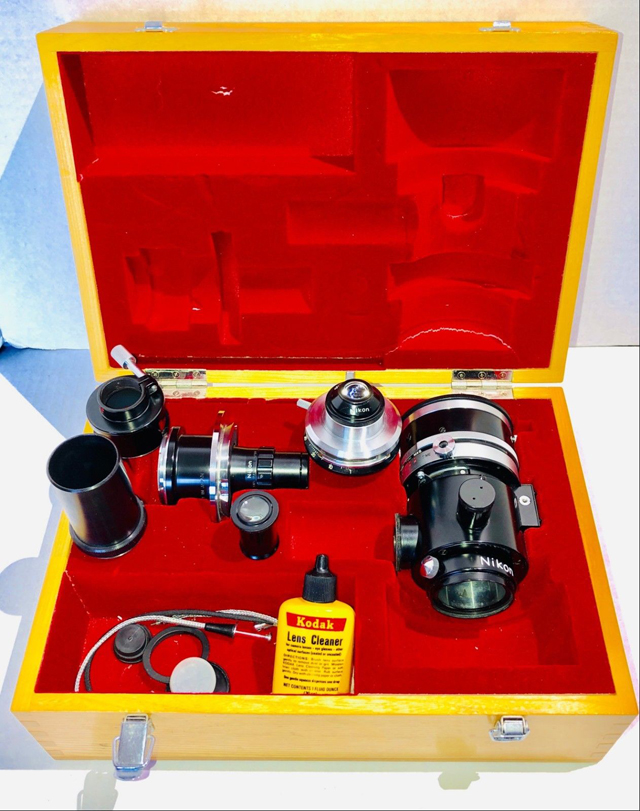
The Microflex body and shutter mechanism, relay lens, brightfieqld condenser,
screw attachment, shutter release cables and a few odds and ends
all presented in a lavish wooden case with red felt-like lining.
The Microflex units all feature a built-in rotary leaf shutter to minimize vibration effects while taking pictures. The mirror flopping up and down, not to mention the shutter slamming across the film plane in a standard camera, provides a significant obstacle to critical sharpness at high magnifications. In addition, since the whole setup of microscope + adapter makes it generally inconvenient to view through the camera’s viewing system, Nikon has provided a right-angle finder for easier viewing, with the image relayed by a moveable prism. The body of the Microflex incorporates a field lens to project the center portion of the eyepiece’s image across the entire 24 x 36mm film frame (or digital sensor). Shutter speeds are selected like most leaf shutters, via a rotary control around the Microflex’s body.
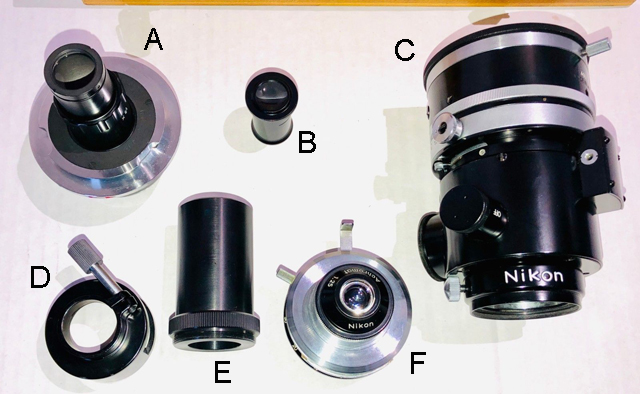
A – Nikon Relay Lens.
B – Lens (not sure what this is used for).
C – Microflex EFM body. D – Nikon Screw Attachement.
E – Tube to connect Nikon film camera (will be replacing this with a Nikon F mount to Canon EOS mount adapter).
F – Brightfieqld condenser.
The actual optical path has the image exit the microscope eyepiece, project through the field lens, and reflect from the prism to the side-mounted finder. The viewing screen adapter is intended for use with 10x or less objective lenses. It has a 62.5mm (2.5 in.) diameter ground-glass screen, with 24 x 36mm frame lines and a cross-etched onto its center. You must first focus on the cross using the eyepiece’s controls, and then you may focus the microscope image as desired.
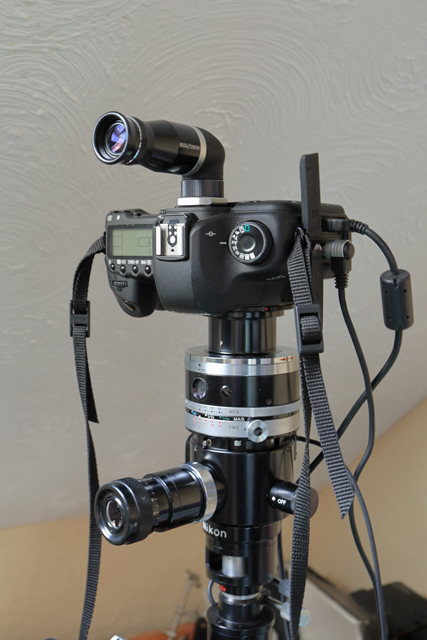
Canon 5D MKII mounted onto Microflex through Nikon F to Canon EOS adapter. There are two cables – the top cable that attaches to the camera is a USB lead that leads to my laptop while the smaller cable attached to the Microflex is a shutter release that opens the diaphragm inside the Microflex. There is a vintage Pentax eyepiece attached to the camera. I like to use this to see how the image is going to fit on the sensor without the use of liveview or the laptop. However, this isn’t really necessary as th eyepiece attached to the Microflex has a frosted glass screen with frames for full frame and APS formats, excellent for composing.
When taking a picture, a cable release is used to depress a plunger. The release actually moves the prism out of the way first, then it opens the shutter for the appropriate exposure, and returns the prism after the exposure is complete. If desired for either convenience or very critical vibration purposes, the prism may be locked into its out-of-the-way position. Metering may be accomplished by the camera body by setting the shutter to “T” and transferring the shutter speed to the Microflex appropriately.

The complete set-up consisting of Canon 5DMKII, Microflex, Nikon L-Ke microscope,
LED dimmer and laptop
Although originally designed for the rangefinder S series, the Microflex is readily adapted for use with the F mount via the appropriate camera adapter. Its robust, versatile, highly flexible, well designed and built. I’m looking forward to using it and testing its performance on some stained specimens. However, that’s a subject for my next post.

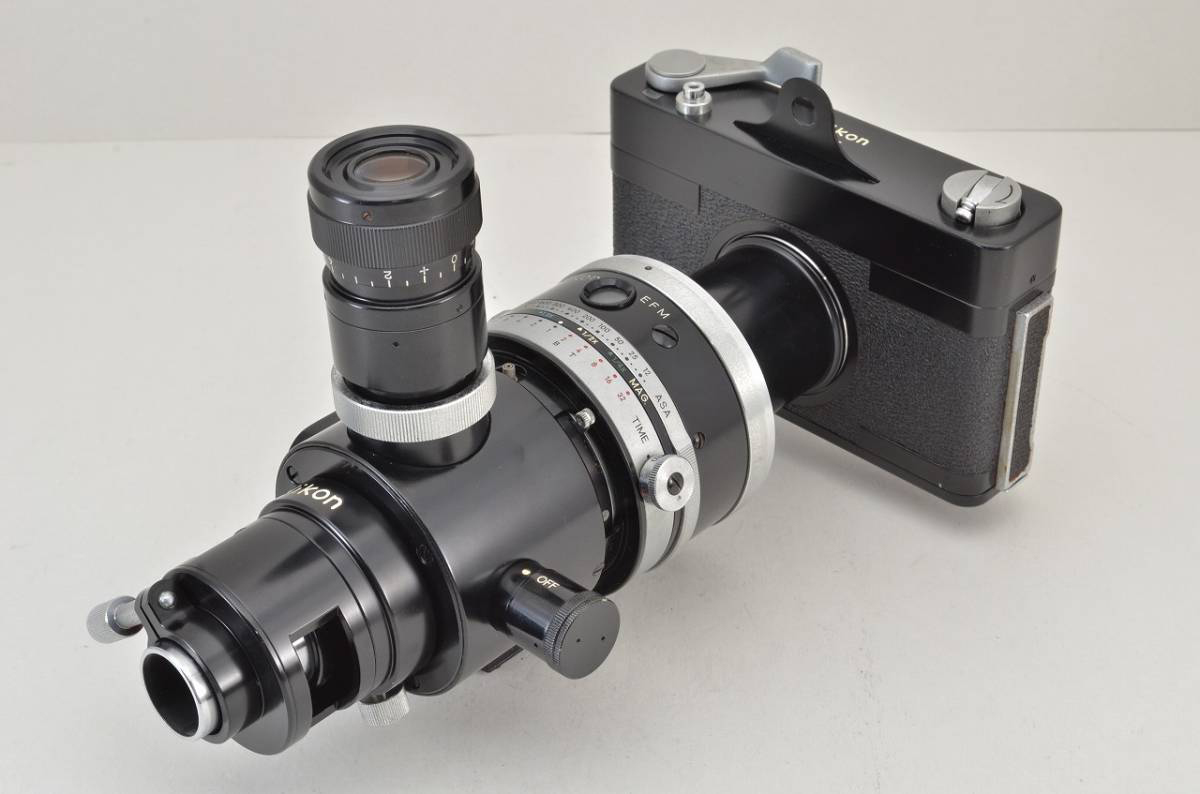
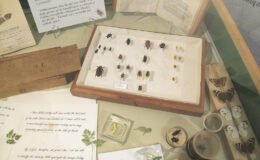
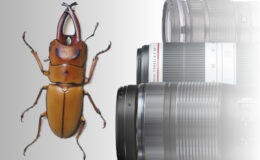
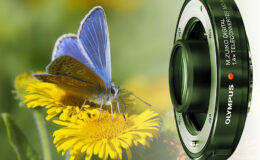
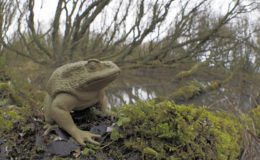
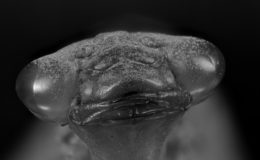
Leave a Comment